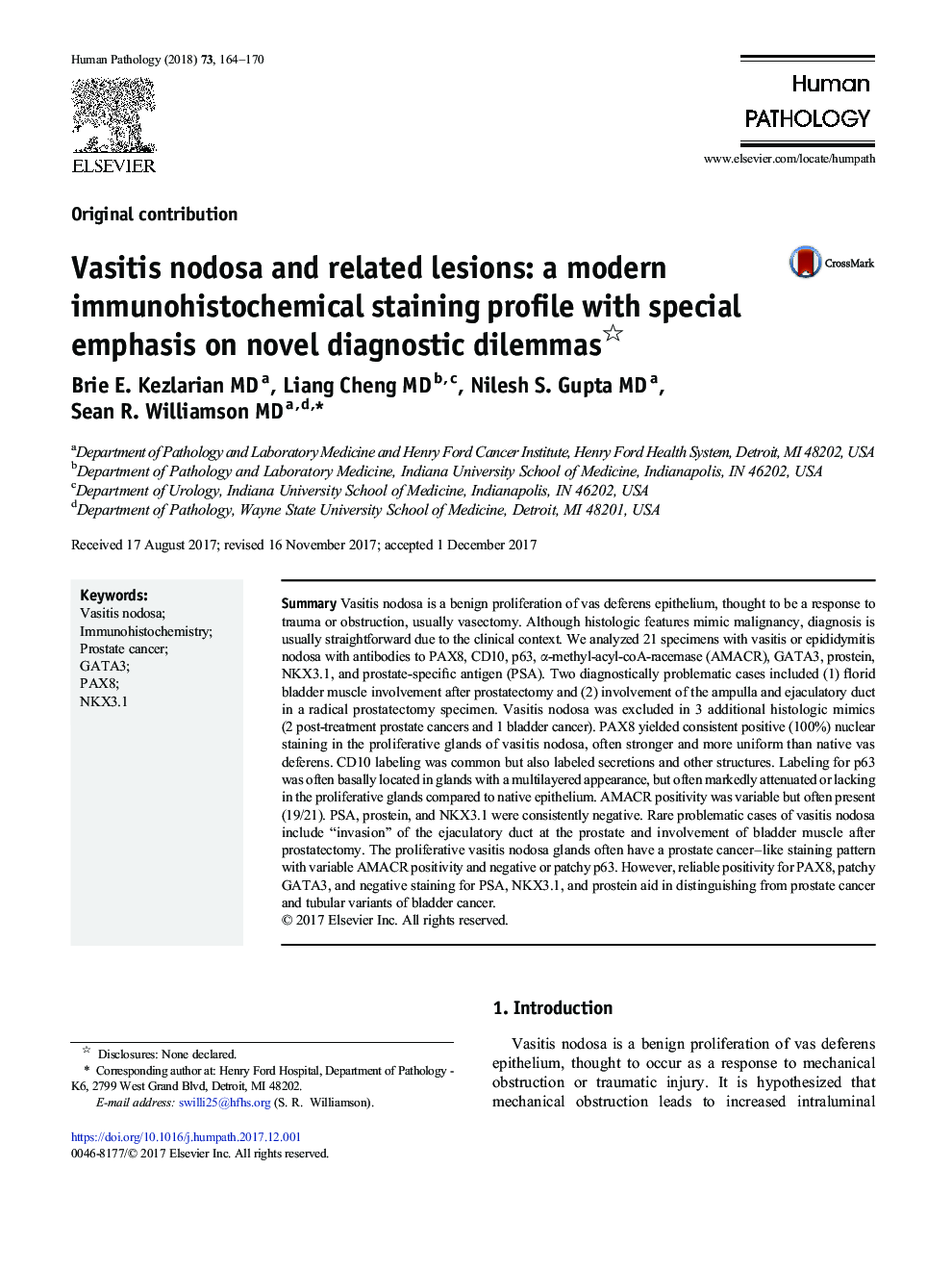| Article ID | Journal | Published Year | Pages | File Type |
|---|---|---|---|---|
| 8807620 | Human Pathology | 2018 | 7 Pages |
Abstract
Vasitis nodosa is a benign proliferation of vas deferens epithelium, thought to be a response to trauma or obstruction, usually vasectomy. Although histologic features mimic malignancy, diagnosis is usually straightforward due to the clinical context. We analyzed 21 specimens with vasitis or epididymitis nodosa with antibodies to PAX8, CD10, p63, α-methyl-acyl-coA-racemase (AMACR), GATA3, prostein, NKX3.1, and prostate-specific antigen (PSA). Two diagnostically problematic cases included (1) florid bladder muscle involvement after prostatectomy and (2) involvement of the ampulla and ejaculatory duct in a radical prostatectomy specimen. Vasitis nodosa was excluded in 3 additional histologic mimics (2 post-treatment prostate cancers and 1 bladder cancer). PAX8 yielded consistent positive (100%) nuclear staining in the proliferative glands of vasitis nodosa, often stronger and more uniform than native vas deferens. CD10 labeling was common but also labeled secretions and other structures. Labeling for p63 was often basally located in glands with a multilayered appearance, but often markedly attenuated or lacking in the proliferative glands compared to native epithelium. AMACR positivity was variable but often present (19/21). PSA, prostein, and NKX3.1 were consistently negative. Rare problematic cases of vasitis nodosa include “invasion” of the ejaculatory duct at the prostate and involvement of bladder muscle after prostatectomy. The proliferative vasitis nodosa glands often have a prostate cancer-like staining pattern with variable AMACR positivity and negative or patchy p63. However, reliable positivity for PAX8, patchy GATA3, and negative staining for PSA, NKX3.1, and prostein aid in distinguishing from prostate cancer and tubular variants of bladder cancer.
Related Topics
Health Sciences
Medicine and Dentistry
Pathology and Medical Technology
Authors
Brie E. MD, Liang MD, Nilesh S. MD, Sean R. MD,
